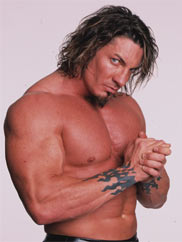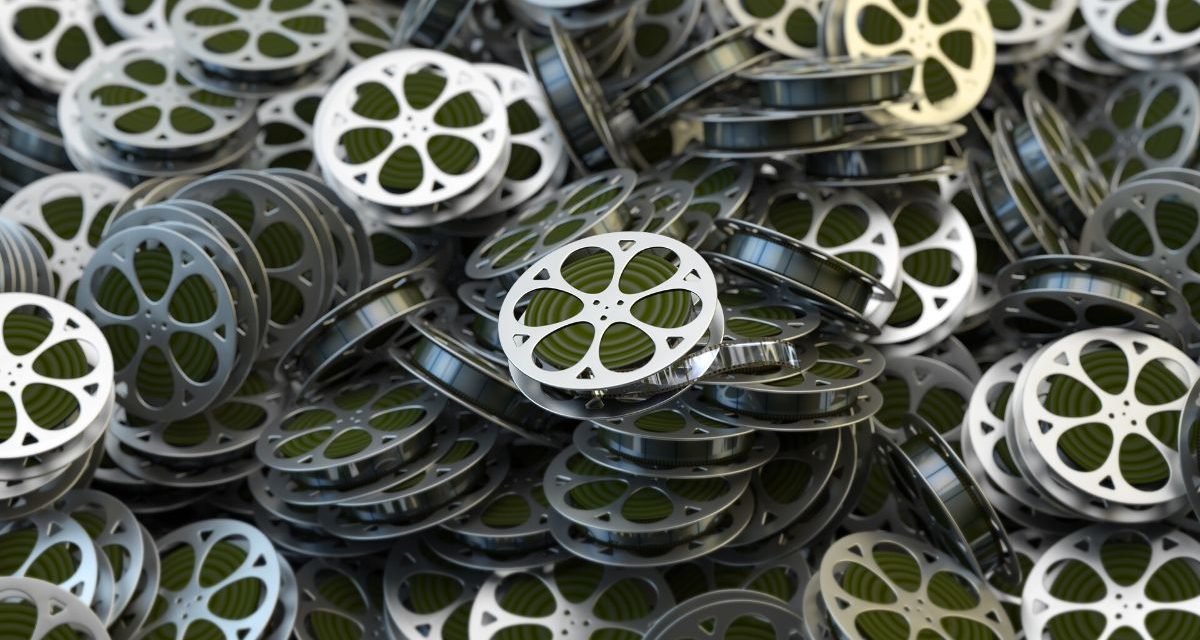Michael Moody is not your average wrestling fan. Yes, he is disillusioned with the state of professional wrestling, worried that it may have reached a point of no return. But rather than posting rants on Internet message boards or simply change the channel on Monday nights, the California native decided to take a closer look at the current state of the industry through his camera lens in his self-produced documentary 101 Reasons Not to Become a Pro Wrestler.
With a title like that, one may be quick to assume that Moody has assembled a laundry list of grievances that would deter many a wannabe pro wrestler from ever setting foot in the ring.

Sean O’Haire is one of many wrestlers interviewed in 101 Reasons Not to Become a Pro Wrestler
“The title just popped into my head one day while editing some of the interview footage,” said Moody in an interview with SLAM! Wrestling from his home in Los Angeles, CA. “There are so many negative things about being a wrestler that I thought the title made sense and sounded interesting. I’m not telling people that dream about or have the desire to be a pro wrestler, not to be a pro wrestler. For every reason there is not to be a pro wrestler, there’s probably a good reason to be a pro wrestler, though I doubt that.”
It is a fitting time for Moody’s project, a time when the industry is on the ropes.
“I think it’s a very sad time to be wrestling fan,” said the 24-year-old director of productions for Niolan entertainment. He first started shooting the film in August of last year. “You don’t have many options on what you’re going to watch or what’s being force fed to you. It just seems like nobody cares. It’s probably the worst time to be a wrestling fan and it’s one of the worst times to be a wrestler. The whole state of professional wrestling is probably the worst it’s ever been.”
It is a bleak but honest assessment.
The era of nightly wrestling and record TV ratings seems almost mythical now when compared to the current realm of a single dominant promotion (WWE), now facing plummeting pay-per-view buy rates, sparse attendance at live events and the possible cancellation of both flag ship television shows from the Spike TV and UPN broadcast networks.
But there is another world of wrestling that is not so visible, a world that Moody is attempting to unearth, study, and understand.
The list of hardships for professional wrestlers easily dims the bigger than life spotlight that enamors’ the viewing public; low pay, injuries, deceitful promoters, backstabbing co-workers, drug addiction. Such a world is not for the common man, but then again, those who dare to chase turnbuckle dreams are far from being the average arm chair observer of life.
To fully grasp Moody’s drive to explore what’s happening in modern day sports entertainment, one must first look back to when Moody was a youngster who was forbidden by his parents to watch wrestling.
“When I was young, I wasn’t allowed to watch wrestling, because of the violence. I wasn’t even allowed to watch Woody Woodpecker,” recalled Moody, resorting to covert tactics to indulge his pleasure of watching the gladiators in tights doing battle in the squared circle. “I still watched it – when my parents were in the bedroom or eating at the dining room table. I would turn it on and lower the volume so I could still watch it. As I grew up, I was able to watch it a little bit more; parents get a little more lenient on what you can and can’t do.”
His love for wrestling was cemented while in attendance at a live WWE show in Los Angeles, watching Bret Hart do battle with his very own brother, Owen Hart. “To see that in person, it was the best match I’ve ever seen without a doubt. That’s the greatest memory I have for sure.”
Like most fans, the Monday night wars of the late ’90s brought Moody to a state of nirvana, a time when being a wrestling fan was the in thing. “It was really great, especially if you were on the west coast of the United States. You get to watch Nitro from 5 to 8. Then you have an hour break to eat dinner, then RAW came on from 9 to 11. It was probably the greatest time ever to be a wrestling fan. There was so much going on every night.”
But the good times didn’t last forever.
“Now it’s like your lucky to see one or good two matches on RAW and sometimes all you’ll see is two matches on the whole broadcast. I was at the show where Kane married Lita. I think on the whole entire RAW show that night, there was, like, two wrestling matches. That’s out of control. It’s not even wrestling anymore.”
Now faced with the current morass that wrestling is mired in, the stark realization that for many practitioners, the ability to find work and make any semblance of a decent living is elusive. In tow, of course, are the taboo issues that are ever present in the minds of those in the locker room, but hidden from being addressed out loud.
“There are certain issues that wrestlers aren’t really given a platform to talk about or they’re not allowed to talk about if they work for Vince (McMahon) or TNA,” said Moody. “Talking about drugs backstage and the abuse of drugs, the need for wrestlers to have a union, or have some kind of safeguard or safety net to prevent somebody like Test from getting fired while they’re injured. Those were just some of the questions I wanted to ask.”
An impressive line-up of interviewees is presented in the film, including Joanie Laurer, New Jack, Konnan, Sean O’Haire, Diamond Dallas Page, Psychosis and Vampiro. What is presented is a cross section of cut to the chase issues, with responses ranging from over the top first person testimonials, to blunt refusals to even address certain questions.
“Sean O’Haire didn’t want answer anything about drugs; he didn’t want to say what he thought about Vince McMahon. DDP didn’t want to talk about politics in WCW,” said Moody. “Other than those two guys I would say pretty much everybody was forthright in speaking their minds.”
Pundits would argue that such a film only provides embittered grapplers with a podium to exercise long standing grudges against fellow workers or company owners. Moody countered this perception.
“Some people would say all these people are grinding an axe. I didn’t find that to be the case at all,” recalled Moody. “With Joanie Laurer, she actually showed a lot of respect in her interview for the company, WWE. For the people who work for the company, she literally has a lot of love for them.”
For Moody, two glowing revelations were identified in his film to help him understand better what drives some people to endure the rigors of the industry. “One, they have a dream they want to accomplish and get to the next level, and the other one is get a pay cheque,” he said.
“If you’re on the indy level, wrestling two matches a week, working in the ring maybe an hour at the most and you’re getting paid five hundred bucks a match, maybe even a thousand for some of these people, that’s good money. In a way, they’re really fortunate to have this job.”
It should be noted that Moody has produced previous shoot interviews with pro wrestlers, entitled The Shooting Range. Despite this, Moody did admit to encountering some surprises revealed by the very people he interviewed.
“Vampiro’s honesty on drugs in wrestling and his honesty about him using drugs too caught me off guard,” he said. “I knew there were drugs in WCW, but I asked the question pretty bluntly ‘Was drugs running rampant in WCW’ and he bluntly said ‘Yes’.”
“Another thing that caught me off guard was Joanie when I asked her ‘Let’s pretend the camera is Triple H and Stephanie (McMahon). What would you say to them if they were here right now?'”
“She just said, ‘I have nothing to say and I’m still smiling.’ It was almost with a tear in her eye. She doesn’t want them to know that she was really as hurt as she was.”
It is a prime example of the efforts of Moody to try and paint a portrait of those he interviewed, to present an unconditional view that fans are normally not privy too.
“There’s all kinds of different footage that was mixed together, making it really special that unfortunately for wrestling fans, is rarely released. These are serious issues that not only wrestling fans should care about but the public should care about.”
No set date has been established for the release of the film, although it will be out sometime this year, direct to DVD. For Moody, the hope is the film will attract both fan and non fans to learn and appreciate the full spectrum world that professional wrestling is, unedited.
“Not everybody can sit down and relate to watching Monday Night RAW. But I think a lot more people can sit down and relate to watching a documentary, with these interviews of wrestlers, and makes them understand what it is to be a wrestler and the struggles they go through.”

